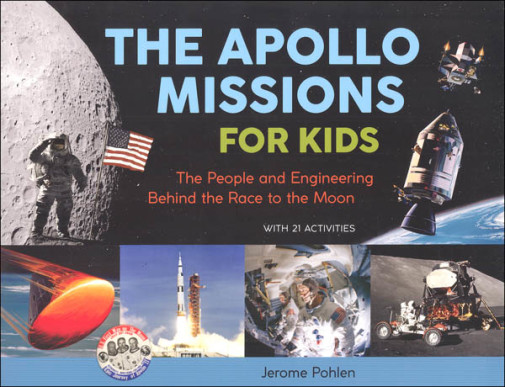We use cookies to make your experience better. To comply with the new e-Privacy directive, we need to ask for your consent to set the cookies. Learn more.
Apollo Missions for Kids
Help students understand the science behind space flight as they learn, read and do projects about the Apollo Missions, the people behind them, the astronauts and their families. Learn about the reasoning behind the space race, Project Mercury, Gemini, Saturn V, Apollo, and Skylab. Children can complete 21 projects to help them understand concepts like propulsion, orbital mechanics, distance, and much more. Add this to your science curriculum, or use it as a unit study on space travel; either way, this resource's projects and information will provide a wonderful hands-on opportunity for space study. 146 pgs, pb. ~ Donna
Exploring one of the boldest engineering and scientific endeavors ever undertaken by humankind.
In 1961, President Kennedy issued a challenge: before the end of the decade, the United States would land a person on the moon and return him safely to Earth--a bold proclamation at the time given that only one US astronaut had ever been to space, for just 15 minutes. To answer President Kennedy's call, NASA embarked on the Apollo missions: a complicated, dangerous, and expensive adventure involving 400,000 people. Before the missions were over, NASA astronauts had made eleven Apollo flights, six of which landed on the moon, and eight astronauts had lost their lives. The Apollo Missions for Kids tells the story of this pivotal era in space exploration from the perspective of those who lived it--the astronauts and their families, the controllers and engineers, and the technicians and politicians who made the impossible possible. The book includes a time line, resources for further study, and places to visit to see Apollo mission artifacts, along with 21 hands-on activities to better understand the missions and the science behind them. Kids will:
- Determine what they would weigh on the moon
- Learn to identify the moon's features
- Demonstrate orbital mechanics with a marble and a shallow bowl
- Calculate how far away the moon is using sports equipment
- Recreate the shape and size of the command module
- Eat like an astronaut and make "space food"
- Design a mission patch
- And much more!
| Product Format: | Paperback |
|---|---|
| Brand: | Chicago Review Press |
| Author: | Jerome Pohlen |
| Grades: | 4-AD |
| ISBN: | 9780912777177 |
| Length in Inches: | 8.5 |
| Width in Inches: | 11 |
| Height in Inches: | 0.25 |
| Weight in Pounds: | 1.2 |

